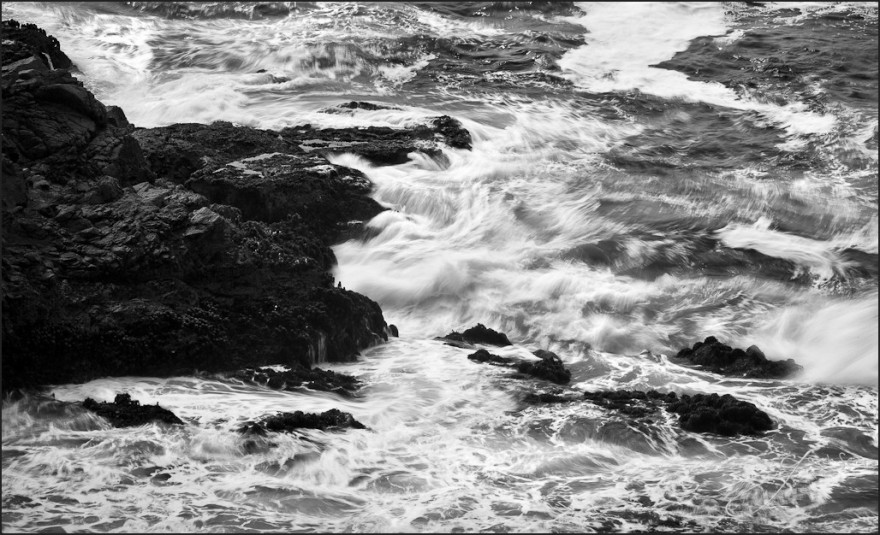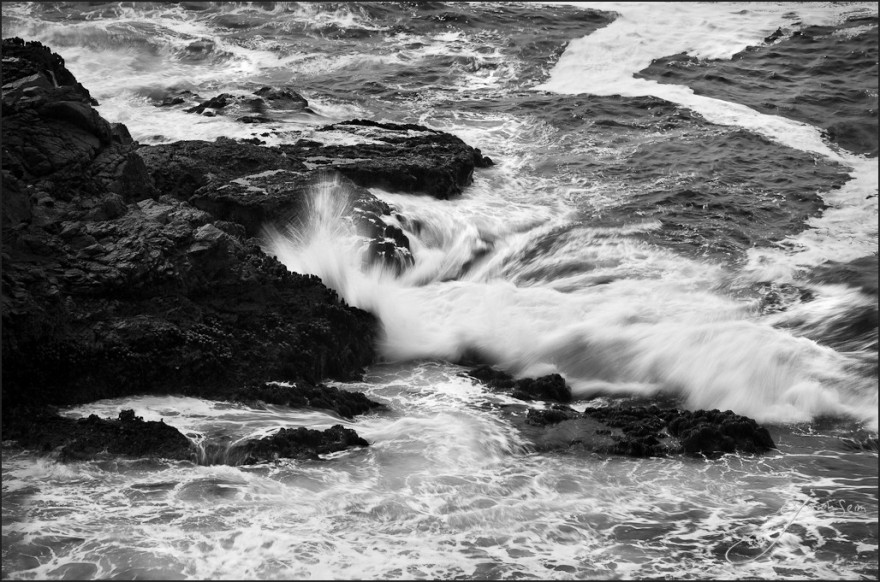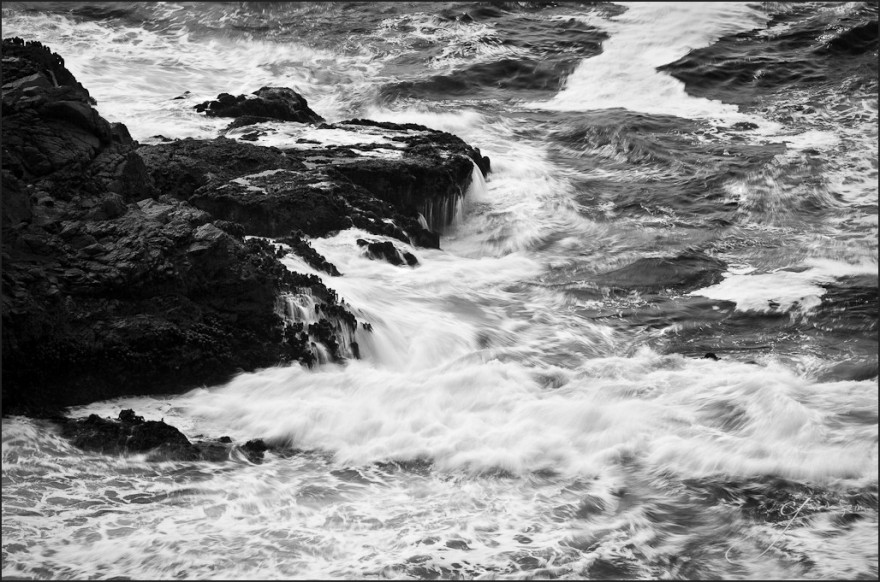
The Pacific Ocean mesmerized me as we drove, trailer in tow, along Route 1 this Spring. It’s so vast, an endless expanse peeking through the passing trees. I spotted a large pull-off along the winding highway, so we stopped for the view and a trailer break. Cyrus and I looked over the edge, seeing the waves strike against the rocks below. Soon I found myself setting up, adjusting the composition and then capturing frame after frame. I was entranced at how each and every image could be so similar and yet so different, the patterns and tones of water combining in endless ways along the rock, though all going to the same place.
Normally, I’m all about a single frame, but it was too little here. Sometimes I break my own rules, and, after a lot of consideration, I really felt this sequence worked. I spent hours finalizing which final images would go into it, and how I could best present them. Then weeks went by as I rethought, making sure I could do nothing to make it better. I’ve also made some test prints, and I plan to release it as a single triptych print and perhaps a few as three separate images (kept together, of course).
Due to the computer’s insufficiency at conveying a wide image, I’m also adding the individual frames from the sequence below so you can take in a bit more detail. Just bear in mind; they will be presented as the triptych above, not separated by themselves. I hope these waves mesmerize you as much as they do me. Enjoy…
Gav
See all three images lather and read details…



For photographers. How it was made…
Canon 5D MK2, 70-200 2.8 L @185mm, f25, ISO50. Exposures… #1, Quis, 1/5. #2, Duo, 1/8. #3 Tribus, 1/5.
This is the first time I’ve processed a pictorial with a specific focus on the sequence. Usually I opt for a single frame, because it alone is all I need to tell the story. But in this case, the story was ever changing, and I found the triptych was needed to do it justice. It’s a simple sequence, but the more you look, the more you’ll realize how different each image is. I marvel at the variety in something that we might normally pass over.
I spent so much time on this, starting with the field work. I knew wanted black and white. I set up the composition and tweaked it to feel just the way I wanted. Then I started making frame after frame. Normally I would only make a few, but this day seemed all about breaking my own rules. I was experimenting, trying various filters and shutter speeds to see what made the water appear the most magical. I used the very small aperture (perhaps overkill) to maintain depth at such a long focal length of 185.
Back in the trailer, I worked on the images, starting with my black and white presets and working into refinements of channels and the like. But it was probably more than a month later, back in the studio, when I finally settled on these three. Had this been one image, my decision would have been much easier, but showing a sequence was a challenge for me. This was a composition ripe for the triptych, and I really took my time, deciding what to use it on and which images best worked with each other.
Next was the final process. The issue I had was that with a long focal length and short shutter speed, the water looked great and the rocks felt soft. It takes very little wind or vibration to affect a long lens. It’s a struggle for which I’m trying to find better solutions. In the end, I decided on a frame with a longer shutter speed which, consequently, has more detail on the stone. Next, I opened each as layers and masked in the sharper stone over the rocky areas, in each trying to keep the water flowing naturally over the rocks.
The layering process was similar to how one might create a gently processed HDR. I gave this a lot of thought, as I would have rather avoided the step. But, in the end, the image was made better, and I feel the realism of the sequence is undamaged. Next, I went into careful burning and dodging to control the tonal values and draw the eye through the scene. This was three-fold, of course, as each had to be done differently.
Finally, I agonized over how to present the three. I know I sound silly, but I normally show a single image, and everything changes on a triptych. With the level of fanaticism I have about my prints, this meant a lot of thought as to how to best present it. In the end, I decided on the black mat between each. I’ll likely print that mat in the main edition, but may make the original to be a series of separate prints presented together. They will not be sold individually, of course. For those who prefer the single image, however, I may release another completely different frame down the road of which I’m particularly fond, but which did not fit this series.
In retrospect, I’m happy with the result. There are things I need to think about and things from which I learned during this very long process, but I think this will make a very nice wall print, and I’m exited to get the first run printed.
Gavin
